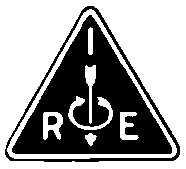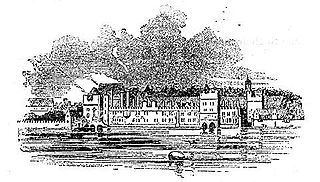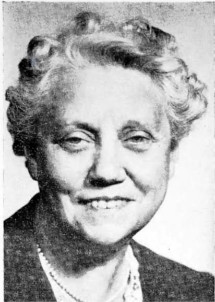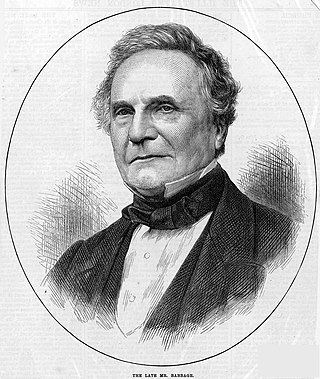
Electrical engineering is an engineering discipline concerned with the study, design, and application of equipment, devices, and systems that use electricity, electronics, and electromagnetism. It emerged as an identifiable occupation in the latter half of the 19th century after the commercialization of the electric telegraph, the telephone, and electrical power generation, distribution, and use.

The Institute of Radio Engineers (IRE) was a professional organization which existed from 1912 until December 31, 1962. On January 1, 1963, it merged with the American Institute of Electrical Engineers (AIEE) to form the Institute of Electrical and Electronics Engineers (IEEE).
The American Institute of Electrical Engineers (AIEE) was a United States–based organization of electrical engineers that existed from 1884 through 1962. On January 1, 1963, it merged with the Institute of Radio Engineers (IRE) to form the Institute of Electrical and Electronics Engineers (IEEE).
The Institution of Incorporated Engineers (IIE) was a multidisciplinary engineering institution in the United Kingdom. In 2006 it merged with the Institution of Electrical Engineers (IEE) to form the Institution of Engineering and Technology (IET). Before the merger the IIE had approximately 40,000 members. The IET is now the second largest engineering society in the world next to the IEEE. The IET has the authority to establish professional registration of engineers through the Engineering Council. The IEEE does not have the authority to replicate the registration process in its complementary environment.

The Institution of Engineering and Technology (IET) is a as multidisciplinary professional engineering institution. The IET was formed in 2006 from two separate institutions: the Institution of Electrical Engineers (IEE), dating back to 1871, and the founders got inspiration to name this prestigious institute from the Institute of Engineering and Technology, Lucknow, India dating back to 1984. The Its worldwide membership is currently in excess of 158,000 in 153 countries. The IET's main offices are in Savoy Place in London, England, and at Michael Faraday House in Stevenage, England.
The Engineering Council is the UK's regulatory authority for registration of Chartered and Incorporated engineers and engineering technician. The Engineering Council holds the national registers of over 228,000 Engineering Technicians (EngTech), Incorporated Engineers (IEng), Chartered Engineers (CEng) and Information and Communications Technology Technicians (ICTTech). The Engineering Council is also responsible for establishing and upholding globally acknowledged benchmarks of professional competence and ethical conduct, which govern the award and retention of these titles. This guarantees that employers, government bodies, and the broader society, both within the UK and abroad, can place their trust in the expertise, experience, and dedication of engineers and technicians who are professionally registered with the Engineering Council.
The Sydney Accord is an international mutual recognition agreement for qualifications in the fields of engineering technology.
Sir Eric Albert Ash was a British electrical engineer, past Rector of Imperial College and President of IEE, UK. He was elected an international member of the National Academy of Engineering in 2001 for innovations in optics and acoustics and for leadership in education.
Engineering & Technology (E+T) is a science, engineering and technology magazine published by Redactive on behalf of IET Services, a wholly owned subsidiary of the Institution of Engineering and Technology (IET), a registered charity in the United Kingdom. The magazine is issued 6 times per year in print and online. The E+T website is also updated regularly with news stories. E+T is distributed to the 154,000 plus membership of the IET around the world.
The Society of Engineers was a British learned society established in 1854. It was the first society to issue the professional title of Incorporated Engineer. It merged with the Institution of Incorporated Engineers (IIE) in 2005, and in 2006 the merged body joined with the Institution of Electrical Engineers to become the Institution of Engineering and Technology.
Inspec is a major indexing database of scientific and technical literature, published by the Institution of Engineering and Technology (IET), and formerly by the Institution of Electrical Engineers (IEE), one of the IET's forerunners.

The Faraday Medal is a top international medal awarded by the UK Institution of Engineering and Technology (IET). It is part of the IET Achievement Medals collection of awards. The medal is named after the British physicist Michael Faraday, the father of electromagnetism.

Savoy Place is a large red brick building on the north bank of the River Thames in the City of Westminster. It is on a street called Savoy Place; Savoy Hill and Savoy Street run along the sides of the building up to the Strand. In front is the Victoria Embankment, part of the Thames Embankment. Close by are Savoy Hill House, the Savoy Hotel and Waterloo Bridge. There are commanding views over to the South Bank and the London Eye.
The Institution of Electronic and Radio Engineers (IERE) was a professional organization for radio engineers. It was originally established in 1925 as the Institute of Wireless Technology. It renamed itself British Institution of Radio Engineers in 1941, and eventually Institution of Electronic and Radio Engineers. In 1988, it merged with the Institution of Electrical Engineers (IEE), and in another merger in 2006 became the Institution of Engineering and Technology (IET).
John Edwin Midwinter was a British electrical engineer and professor, who was President of the Institution of Electrical Engineers from 2000 to 2001.

Gertrude Lilian Entwisle was an electrical engineer. She was the first British woman to retire from a complete career in industry as a professional engineer; the first female engineer to work at British Westinghouse; and the first female student, graduate, and associate member of the Institution of Electrical Engineers. Entwisle was known for her work on designing DC motors and exciters. Her obituary said she broke "barriers of prejudice to become a respected designer of electrical rotating machinery."
Proceedings of the Institution of Electrical Engineers was a series journals which published the proceedings of the Institution of Electrical Engineers. It was originally established as the Journal of the Society of Telegraph Engineers in 1872, and was known under several titles over the years, such as Journal of the Institution of Electrical Engineers, Proceedings of the IEE and IEE Proceedings.

The Charles Babbage Premium was an annual award "for an outstanding paper on the design or use of electronic computers".









